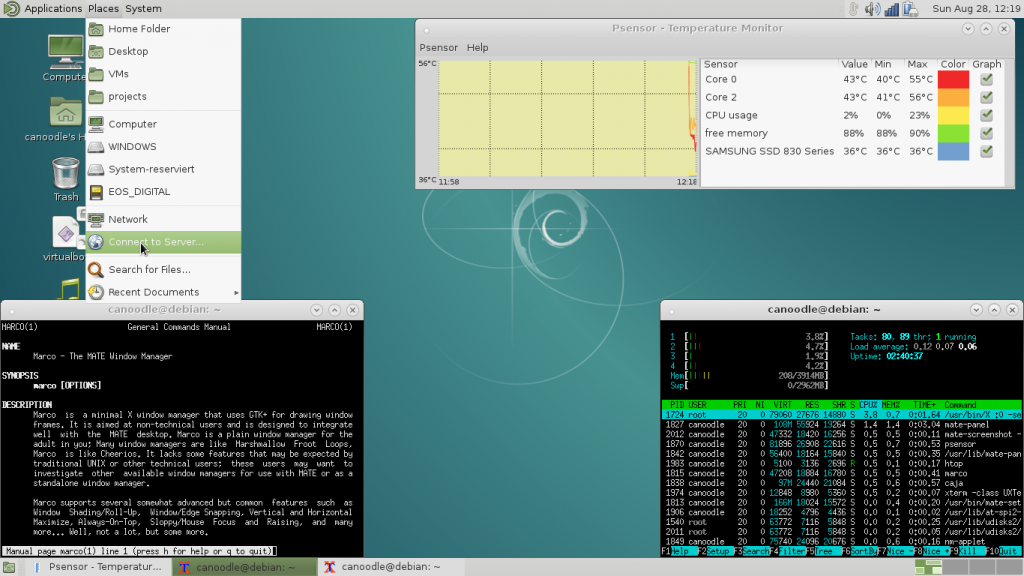


Normally, rsync can directly be used by specifying source and destination directories, but we usually set it up in daemon mode (an “rsync server”) at one end, so that it can receive requests for synchronisation. Overall, it is a simple, easy and efficient solution, where we don’t even need to install any complicated backup software. It can even be used to synchronise files locally (on the same system), if you want to make backups on the local machine itself (say, to a different drive, like a USB drive). rsync only transfers changed portions, and applies the changes to the file/directory tree copy on the other system, somewhat like the patch utility. This is very beneficial when synchronising large files or directory trees with gigabytes of data. The killer feature, really, is differential backups - rsync, with its unique algorithm, allows you to transfer only the changes made in a file/directory tree, instead of re-transferring all data. Another advantage is that it is bundled with almost all major Linux distributions today. This makes it one of the essential utilities in one’s toolkit, even if not planning to use it for backups. The rsync utility can be used cross-platform-Linux, Mac OS X and Windows (with Cygwin, of course) - and, in combination with cron and SSH, it can easily be scripted. Overall, we can typically download only about 2 GB of data out of the 23 GB dump.Learn how to use this powerful utility that almost all experts use in their day-to-day work, to perform tasks like back-ups, and much more. Our import script uses rsync with a set of pre-configured -include and -exclude options under the hood to do that. MySQL shell: the best tool for your logical backupsīefore we can import the data into a local MySQL instance, we need to download the relevant part of the dump to the local machine. It can copy/update files that are missing on the target host and (optionally) it can delete files that have been deleted on the source, but are still present on the target. Https:// is not only a file transfer tool, but it can synchronize directories locally or over the network using ssh, stunnel or its own protocol(you'll have to run rsync in daemon mode on one of the hosts for that). From time to time, I'll swap this offsite hard drive with one of my newly backed up hard drives from home. I'll keep most of these external drives at home but always make sure that I have at least one hard drive stored at a different location. I then copy the contents of my main drive to a number of external hard drives (which also will be spinning disc and encrypted) using rsync.Looking for feedback on my backup process.The interface is command-line, which can look intimidating for some users.

I can "easily" download your files from the cloud provider, or upload files, or many other features. Rclone is a bit like rsync, but aims to connect to any cloud storage provider, including Google Photos and Google Drive. Download Google Photos with all metadata at once (natively).For larger torrents, I think it's useful to use your file manager or something like rsync to manually copy the files, then move it in qBittorrent and afterwards you can remove the files yourself from the original location as to avoid your files from being lost? For me the 'move torrent' function in qBittorrent seems to be a bit quicker this way.


 0 kommentar(er)
0 kommentar(er)
